Given its salubrious year-round climate, neat and orderly coffee plantations and scenic country vistas, Coorg has emerged as a high-potential tourism destination
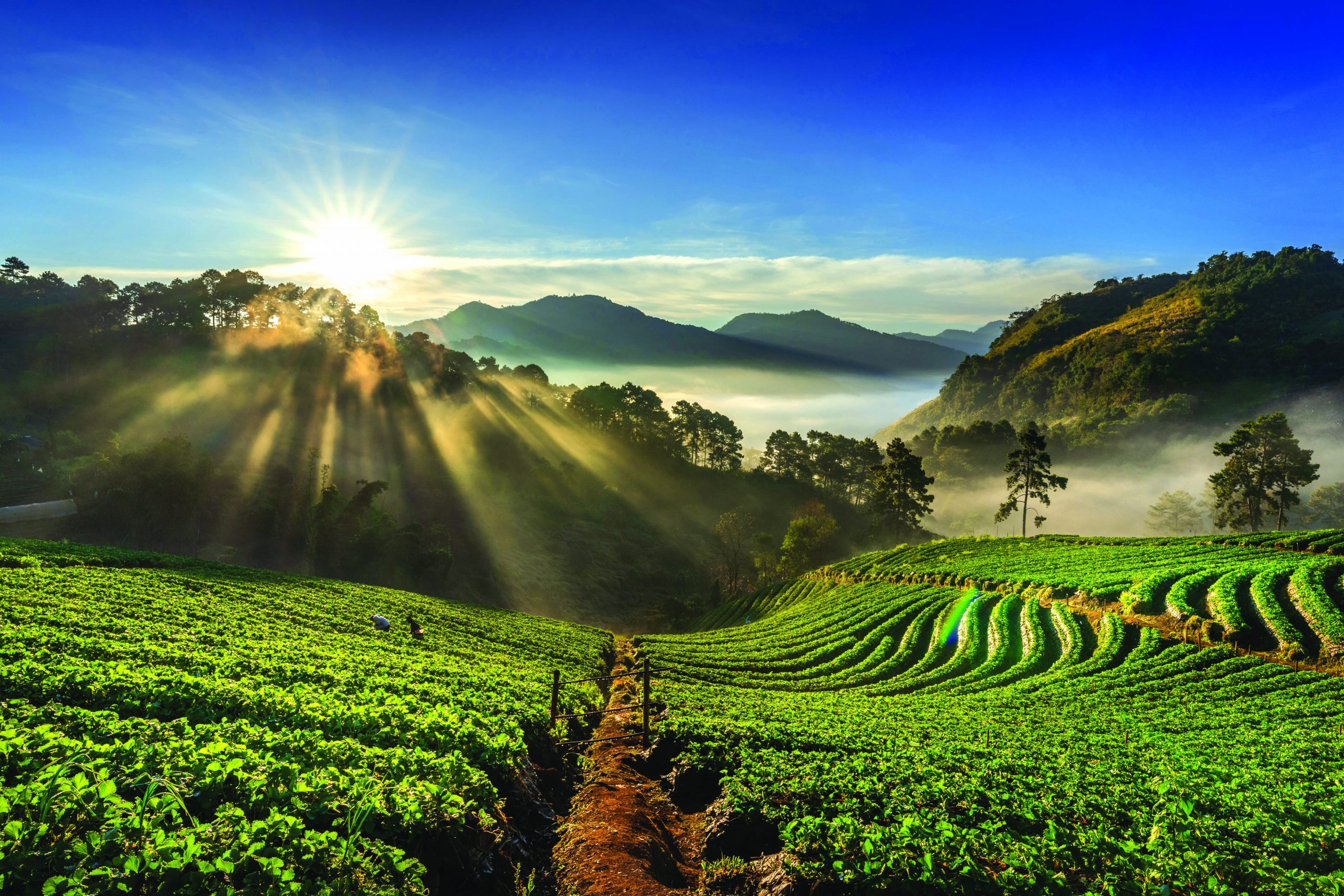
Set under the thinning canopy of the Western Ghats in the south-west of Karnataka (pop. 63 million), Coorg is the heart of India’s coffee country. During high season (April-June), the entire district is enveloped in aroma of the roasted bean, the world’s most heavily traded commodity after crude oil. With its panoramic vistas, green valleys, thick forest cover, rolling hills and dales, Coorg is known as the Scotland of India for its wet and windy climate. Though one of Karnataka’s 31 districts, Coorg (pop. 596,718) covers a land area of 4,102 sq. km —four times larger than Hong Kong and seven times the area of Singapore, most of it under tree cover because unlike tea plants, the coffee bush requires shade.

In a global agri-industry dominated by Brazil which produces 40 percent (3.5 million tonnes) of the world’s coffee output annually (cf. India’s 349,000 tonnes), India is acknowledged as the producer of finest mild coffees. With their tropical climate, high altitude (3,500 ft), abundant rainfall and fertile soil, Coorg and the neighboring Chikkmagaluru districts in Karnataka have consistently produced and exported high quality coffee for over 150 years. The coffee output of these two districts accounts for 70 percent of the total coffee produced in the country.
In particular Coorg coffee is valued for its blue colour, clean beans and fine liquoring qualities and is in high demand in international markets (nearly 80 percent of the district’s coffee production is exported). The numerous coffee estates here are globally renowned for their arabica and robusta coffee beans which are blended to suit national and individual palates.
In March and April — coffee blossom time in Coorg — the snow-white flowers of the coffee bush waft a heady fragrance and present unforgettable vistas to visitors. When blossoms transform into berries, the bushes are cropped. The cherry-red fruit is pulped, seeds separated, dried and sent for curing. A holiday on a coffee plantation can provide the visitor a heady first-hand education experience of the entire process of coffee production from harvest to shop shelf. But there’s more in Coorg or Kodagu (the name of the district in Kannada, the official language of Karnataka). This district is also one of the world’s largest producers of pepper, cardamom, and honey.
Not much is known about the early history of Coorg. Recorded history is available only from 1600 AD onwards when Kodava rajas ruled over the region and established their capital at Mercara by constructing a mud-walled fort. The martial Kodavas confronted Hyder Ali and his son Tipu Sultan who ruled the Mysore region in the 18th century by way of sporadic rebellions and violent insurrections. But in 1785, Tipu’s large army marched into Kodagu and devastated the kingdom. Fourteen years later, with the help of the British who defeated Tipu Sultan following the historic siege of Srirangapatna in 1799, Coorg regained independence and under the leadership of Raja Veerarajendra rebuilt the capital. Later in 1834 the British exiled its ruler Chikkaveera Rajendra and assumed administrative charge of the district. The British left India in 1947, leaving behind a legacy of coffee plantations, colonial buildings, and well-planned road networks.
Inevitably given its salubrious summer and fine winter climate, neat country vistas, Coorg has emerged as a high-potential mainly domestic tourism destination. With major hotel chains and local entrepreneurs providing packages for those seeking adventure, there are innumerable trekking, golfing and angling opportunities which have attracted a swelling inflow of tourists into the district. For the religiously inclined there are the several ancient and modern Hindu, Buddhist and Muslim shrines. Moreover, a growing number of unique home-stay packages are being offered by coffee planters who have discovered tourism as an option to reduce their dependence on the international coffee market dominated by Brazil (Indian coffee prices rise only when there’s a frost or natural calamity in Brazil). Coorg’s growing home-stay tourism industry provides an additional income stream for the district’s traditionally hospitable Kodavas while offering visitors a unique touch and feel (and education) experience of plantation life.
Getting to Coorg. Coorg is the only district in Karnataka wholly ignored by the public sector Indian Railways, so the only means of direct access is by road. However, there are some cities close by which are linked by air and rail. Air. The nearest airports are Mysuru (90 km) and Bengaluru (285 km). Train. The nearest railheads are at Mysore, Mangaluru and Hassan (146 km). Road. From Bengaluru, there are two motorable routes to Coorg one via Hassan and another via Mysore — both of which are nearly the same distance (around 250- 260 km).
MADIKERI
Formerly the capital of Coorg, Mercara or Madikeri (pop. 33,000) is the taluk headquarters of Kodagu district. Surrounded by picturesque hills wafting the heady aroma of spice and coffee, Madikeri is an ideal base point for trekking expeditions into the hills of the Western Ghats.
Spread over several ridge-like formations Madikeri itself offers several interesting historical monuments and temples. Among them: the Omkareshwara Temple built in 1820 by King Lingarajendra and set in the middle of a lake is a catholic mix of Keralite, Gothic and Islamic styles of architecture. Madikeri Fort is a 19th century construction in the centre of town and houses a temple, a chapel, prison, and a small museum. Raja’s Seat is the spot from which the rulers of Coorg ritually viewed spectacular sunsets. Kakkabe is well known as the largest producer of honey in South-east Asia. The Padi Igutappa temple here is an important shrine which houses the presiding deity of the Puthari Festival held in November/ December every year. The Malnad Palace originally built as a hunting lodge and currently being used as a children’s campground is also worth a visit.
Excursions. Madikeri is the gateway to several day and weekend getaways. The more popular among them are Cauvery Nisargadhama — a 2.5 sq. km island sited smack in the middle of River Cauvery. Bhagamandala aka Triveni Sangama is the confluence point of the Cauvery. Sujyothi and Kanike rivers. The Bhangandeshwara temple here with its intricate carvings and copper roof is an important shrine for pilgrims. Moreover, a dip at the Triveni Sangama is said to rejuvenate depressed and sagging spirits.
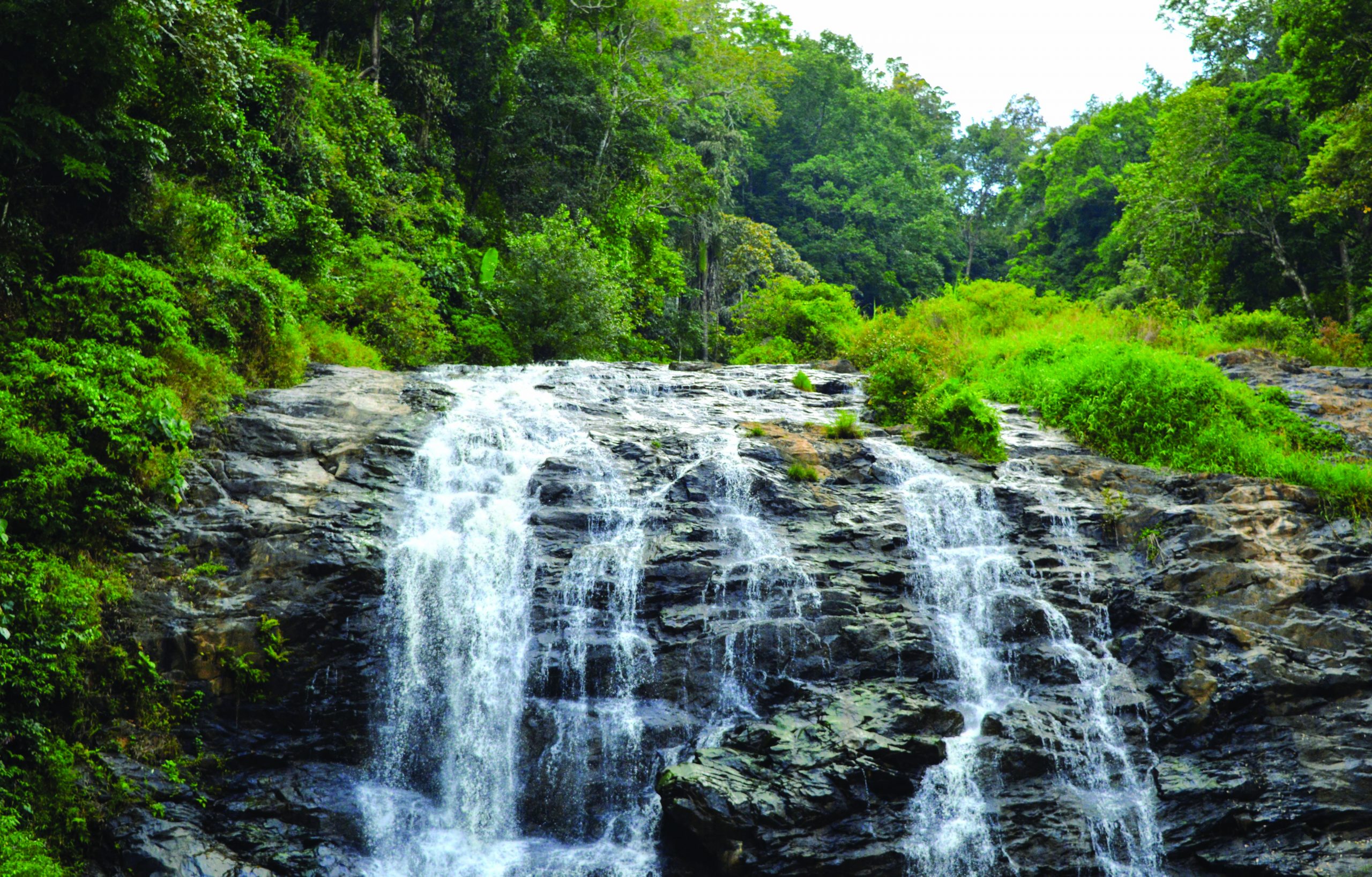
Abbi Falls. A mere seven-kilometer drive from Madikeri is Abbi Falls a scenic picnic spot. The narrow road to Abbi Falls snakes through the dense green foliage of surrounding coffee plantations. Since the falls are situated on private property, permission has to be obtained at the entrance to visit them. A white wall of water dropping with enormous velocity against huge rocks throws up a continuous giant spray which descends into a flowing stream to join with the Cauvery downstream.
Central Horticultural Experiment Research Station, Chettali (25 km) maintained by the Union government, conducts experiments and research on coffee production. It is sited on a scenic farm on the Mercara- Siddapur-Virajpet road.
Valanoor (30 km) situated in the backwaters of the Cauvery is one of the most popular angling sites in Karnataka with a profusion of golden mahseer, maral and mapp fish. Licence/ permit from the forest department is mandatory for aspiring anglers.
Byle Kuppe (30 km) is the largest settlement of Tibetan refugees in south India and houses the biggest Tibetan monastery in the country. The town also boasts two universities and is maintained by Buddhist monks. Every year the Dalai Lama’s birthday (July 6) is celebrated with traditional fanfare here. Coorg is synonymous with the mighty River Cauvery (flow length 765 km) — one of the seven sacred rivers in the country mentioned in ancient Hindu scriptures — which originates in Talacauvery (translating to the head of the Cauvery, the point of origin of the river) in the Brahmagiri Hills, 4,500 ft above sea level. The river emerges as a small perennial spring and flows underground to emerge again a short distance away where a stone pond has been built. From Talacauvery, steps lead up to the nearby Brahmagiri peak, where the seven sages or saptarishis are believed to have performed a special yagna (sacrifice). Inevitably there is a Shiva temple with a rare and ancient shivalinga and another dedicated to Ganesh. Legend has it that every year on tulasankramana day (mid-October), Goddess Parvati appears in the kundike as the sacred teerthodbhava. This auspicious occasion is marked by a sudden upsurge of water.
Accommodation. Top-end: Orange County resort (Rs.21,750-27,000 per night) and the Taj Madikeri Resort & Spa (Rs.16,000- 26,000). Mid- range and Budget: Capitol Village Resort (Rs.4,950-5,800); KSTDC’s Hotel Mayura Valley View (Rs.3,000 to 5,200); Coorg Holiday Homes (Rs. 4,200-4,900)
VIRAJPET
Situated in the heartland of Coorg’s coffee gardens is the second largest town of the district — Virajpet — famous for its sprawling golf courses. Coorg Golf Links is a nine hole, 3,000 yards, par 35 course with challenging fairways reaching into the hills. Not surprisingly a growing number of golf afficionados across the country are attracted to the district by its agreeable climate and lush fairways.
Irupu Falls
This water curtain is 48 km from Virajpet on the road to Nagarahole National Park. It is also a pilgrimage site for Hindus with the Shiva temple on the banks of river Lakshmanatheertha reportedly established by Lord Rama himself. The river descends perpendicularly into the roaring cataract known as the Irupu Falls. This site is believed to possess the power to cleanse one’s sins and is visited by thousands of devotees from far and near particularly on the auspicious night of Shivratri (mid-March). Moreover, this is also home to a Sri Ram temple surrounded by paddy fields, from where one must climb upwards through a natural forest to reach the falls.
Nagarahole Wildlife Sanctuary
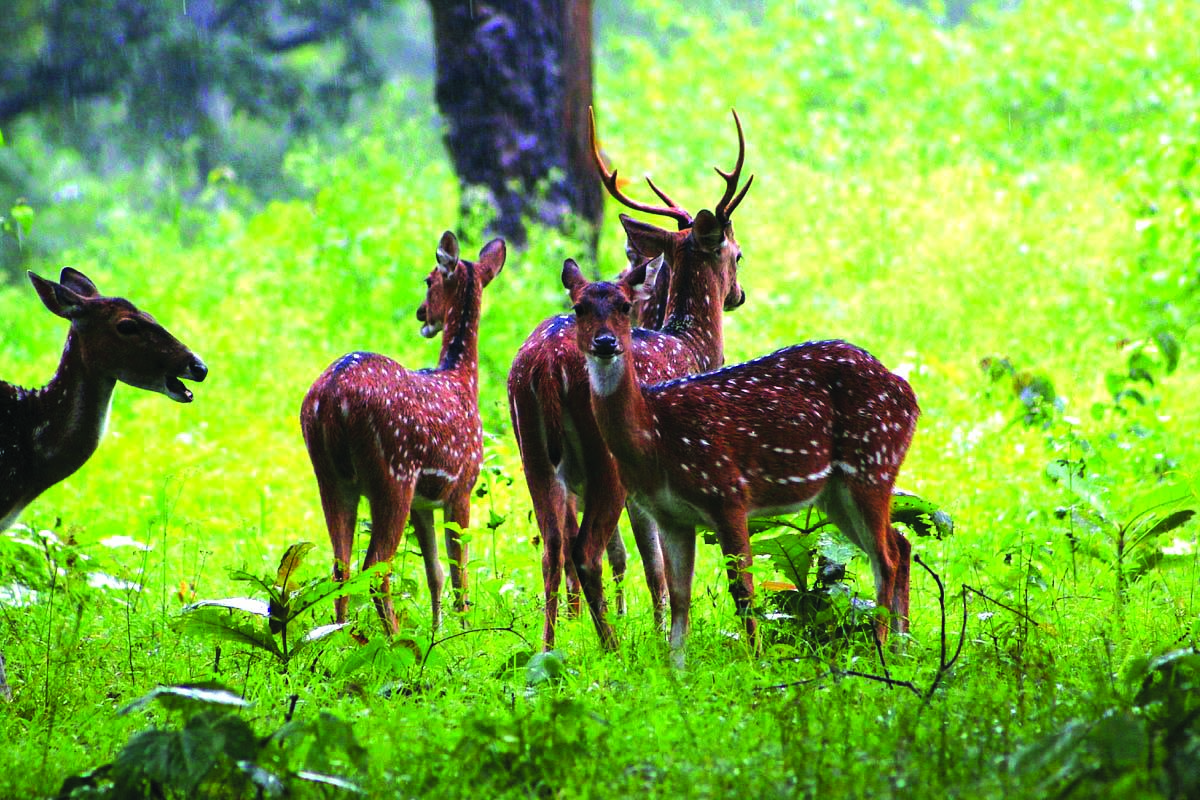
The most popular tourism destination in Coorg is the Nagarahole National Park, a haven of diverse flora and fauna. The Nagarahole Wildlife Sanctuary (80 km from Madikeri) spread over an area of 847 sq. km and part of the country’s first biosphere reserve is located at the foot of the Brahmagiri hills. Well-endowed with tropical and deciduous forest cover, the sanctuary derives its name from the winding river — Nagarhole meaning ‘snake river’ — which flows through the park. The Karnataka government’s forest department conducts tours along well-defined routes for tourists, in early mornings and evenings. One can be certain of sighting bison, elephant, spotted deer, sambhar, barking deer, wild boar, mongoose, peacock, jungle fowl and several other species of wild animals and birds. Trekking and entry of private vehicles require prior permission from the forest department.
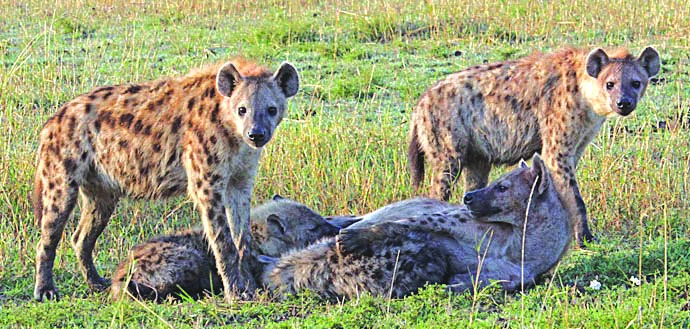
Sport fishing in Coorg
The Cauvery is a prime angling river rich in mahseer and ladyfish. The former have to be released back into the river while the latter can be consumed. The Madikeri-based Coorg Wildlife Association provides information on fishing licences and guides for mahseer fishing. Licenses are mandatory and issued for only a specified stretch of water.
SOMWARPET
Somwarpet, (42 km from Madikeri) is the hub of coffee trading in Coorg. The drive from Madikeri offers some of the very pleasing views as the road glides through the finest coffee estates in the region. Magnificent trees reach up to the sky on both sides of the road in one great spread of continuous foliage. Besides being the coffee-trading epicentre of Coorg, Somwarpet is renowned for its Basappa Club, frequented by coffee planters.
Dubare Elephant Camp
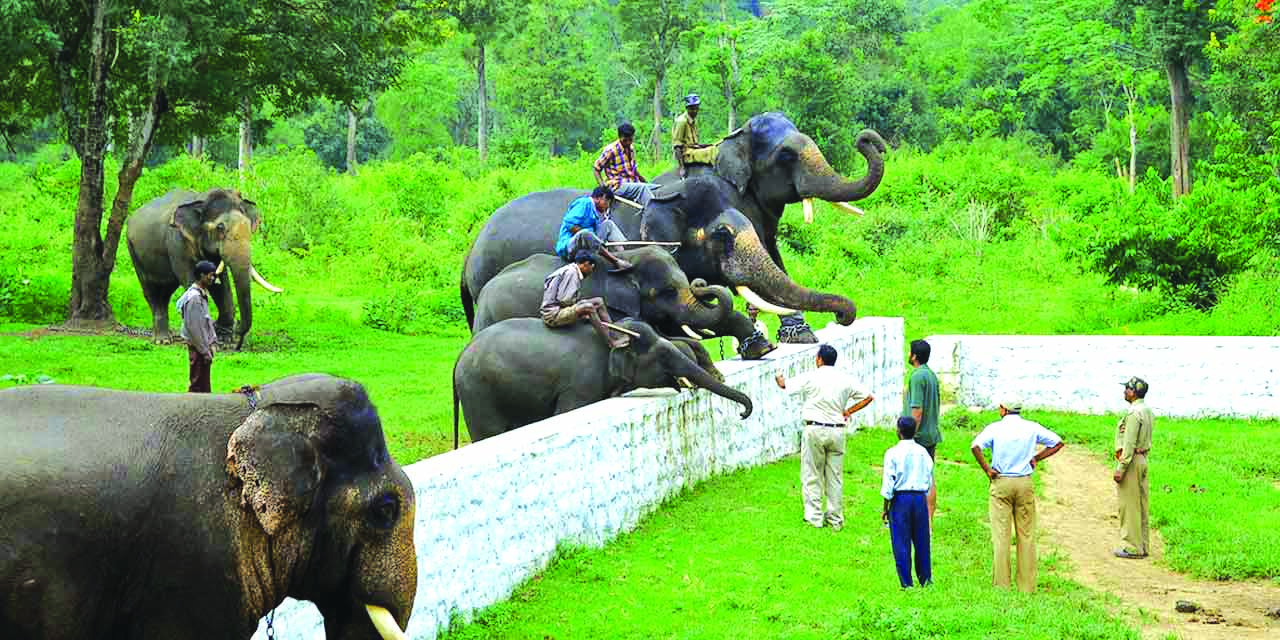
This is mainly an elephant trapping and training centre sited on the edge of Dubare forest, on the bank of the Cauvery, on the Kushalnagar-Siddapur road. The largest surviving mammal, the elephant is trapped in the contiguous forests by Kuruba tribals and held captive for upto six months in large teak cages. After being gradually tamed the elephants are taken down to the river to bathe and to be scrubbed clean by their mahouts.
For further information: https://kodagu.nic.in/en/tourism/
Homestay options in Coorg
A sojourn in a colonial style bungalow in the heart of a cool green coffee plantation is a newly emergent long- weekend holiday option which is attracting in a growing number of city dwellers yearning for breathing space. Coorg witnesses an annual footfall between 1.5-2 million annually. Among the home-stay options in Coorg are:
RAINFOREST RETREAT
The Retreat is an organic spice garden and research centre, nestling in the heart of the Western Ghats in Coorg. Coffee, cardamom, pepper, vanilla is cultivated organically here. Other than providing an experience of estate life, the hosts also organise guided road trips to some of the most interesting and beautiful places nearby. The resort also has options for long-term staycations. Price range: Rs.10,000-12,000 per person per day, all meals included.
HONEY VALLEY RESORT
Honey Valley is a homestay that doubles as a base camp for the highest mountain, Mt. Tadianadamol (5,730 ft) in Coorg. Sprawled in a lush green coffee estate where black pepper is also cultivated, the homestay has grown from being a single house facility in 1994 to having five guest facilities and an Estate Guest House named Chingaara. Visitors can view 50 different types of birds, butterflies among other natural life forms here.
Price: Rs.700-5,000 per night.
THE LAST RESORT
Probably Coorg’s most remotely located estate, Last Resort is a Union government certified organic farm surrounded by coffee, pepper, and paddy plantations. Sited on the banks of the River Cauvery, the main house is a quaint two-bedroom cottage with a loft and two bathrooms. Across the river is the Dubare Wildlife Forest with its creaking bamboo groves.
Price: Rs.5,000-6,300 per person per day.


























